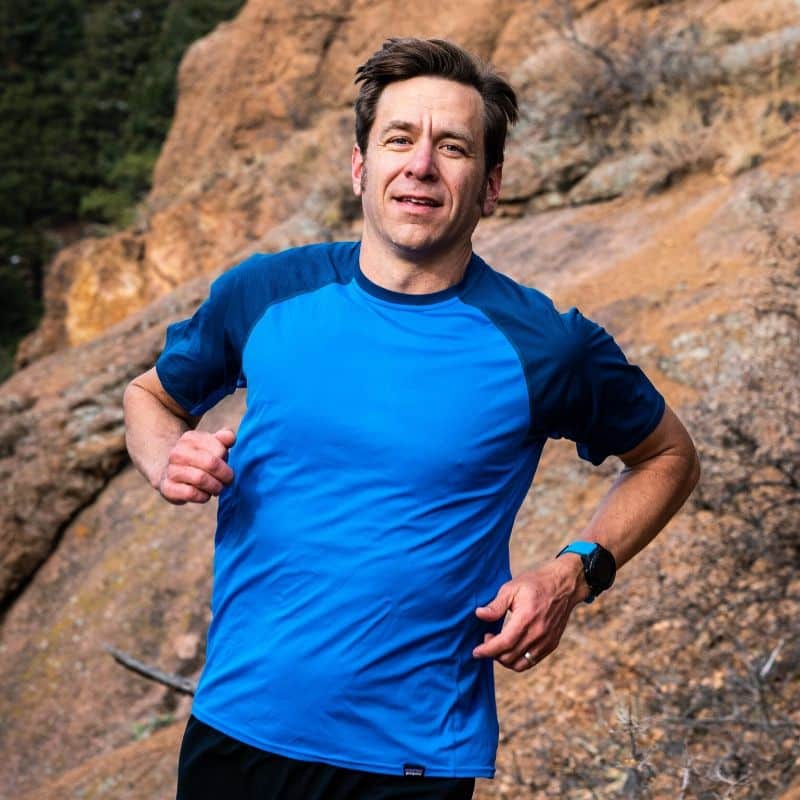
Stoking The Fire: How To Get Back Into Racing Ultras
By Jason Koop
CTS Coaching Director
Author, “Training Essentials for Ultrarunning”
I’ve been to a ton of ultrarunning events over the past two years, but none as a competitor. I crewed, paced, volunteered, cheered, and supported; I just didn’t race. Earlier this year my wife signed up for a mid-October 50k, and I thought running the race with her sounded like a great fall trip and a chance to get back into racing. We had a great time, and the race did exactly what I hoped it would: it rekindled my passion for racing. If you’ve taken some time away from ultraruning and you want to get back into it, here is my advice for how to get it done.
Don’t Wait for the Perfect Time
If you think you need to wait until everything in your life is perfect before you can return to ultrarunning, you’ll never do it. You will always have something else you can do, but focus on what you want to do. If you’re looking for excuses, you’ll find them. Just jump in.
Pick a Realistic Race
Like many of you, I have run some of the hardest 100-milers in the United States. But for my first race after two years away from competition, I didn’t seek out the gnarliest challenge I could find. Instead, I picked a 50k that would be challenging but offered a high probability of success. The goal is to get back into the process of preparing and competing, and you want to be able to chalk up a personal win by finishing and enjoying the experience.
Don’t Overthink Your Training
Part of the reason you want to pick a realistic event for your first race back is so your preparation only requires a moderate increase in training volume and specificity compared to what you have already been doing. With athletes I’ve coached through comebacks, I’ve found athletes tend to get overwhelmed by a sudden return to highly structured and regimented training. It’s a matter of pacing. You don’t start an ultramarathon with a sprint, and the same applies to a return to structured training.
Optimize the Bang for Your Buck
When it comes to training, there’s always a relationship between impulse and response. Some energy systems are slower to respond to training and take longer to lead to substantial physiological improvement. The VO2 system, however, responds quickly with only a few weeks of focused training. This doesn’t mean you should go from the couch to VO2 intervals, but in the spirit of not overthinking your preparation for your first race back, tuning up your more generalized running fitness with a block of VO2 max intervals delivers a moderate boost in fitness to get you through the race. The idea is, of course, that you’ll rekindle your passion for training and competition and subsequently transition to a more structured, well rounded training plan.
Check and recheck your gear
If it’s been a while since you last ran an ultramarathon, don’t assume your gear is race ready and where you left it. When you train and race regularly you dial in routines until they become second nature. You’ll get back there, but expect to be a bit rusty this go around. And it’s not just your gear; you’re likely to be a bit clumsy about processes like scoping out the weather and terrain, and arranging aid station drops. The payoff for a little extra diligence beforehand is a great day out on the course and getting your comeback race under your belt.
► Free Ultrarunning Training Assessment Quiz
Take our free 2-minute quiz to discover how effective your training is and get recommendations for how you can improve.
Enjoying This Article? Get More Free Running Training Tips
Get our coaches' best training advice, delivered straight to your inbox weekly.
Soak it All In
Reengaging with ultrarunning from the competitor side of the fence, as opposed to the support/pacer/volunteer side, is one of the major goals for your first race back. It’s going to be hard (because it’s always hard), but it’s important to engage with the aid station crews, the volunteers, and other runners. Take in the views, revel in the challenge, and laugh through the misfortunes. Aim for an immersive experience and let ultrarunning sink its hooks into you again.
The biggest bonfire starts out as a small flame flickering in the kindling. In the beginning you have to be careful not to stamp out the flame or pile on too many logs. As you return to racing, guard your flame and let the fire within gradually build.


Comments 2
Great reflections and congrats on strapping on the shoes for competition coach! Great to see you at Dylan and Harmony’s feb wedding!
Pingback: Ultramarathon Daily News | Halloween Edition